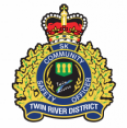Twin Rivers Community Safety Officer (CSO)


The Twin Rivers Community Safety Officer (CSO) program provides municipalities the option to enhance existing community safety services through the employment of CSOs. CSOs deliver high priority/low risk to harm community safety services and provide communities with an additional uniformed presence.
It is the intention of the RM to utilize the Twin Rivers CSO Program to enforce municipal bylaws and provincial legislations and act as the primary Bylaw Enforcement Officer, and enforce all municipal bylaws.
The RM of Rosthern partnered with the Towns of Rosthern, Duck Lake, Hepburn, and Waldheim on this join enforcement effort to ensure safer municipalities for our residents.
In addition, the CSO provide proactive policing through public educational opportunities, engagement with local stakeholders, and creating relationships with residents to encourage compliance for bylaws.
What Provincial Statues are enforced?
| The Alcohol and Gaming Regulation Act, 1997 | The Mental Health Services Act |
| The All-Terrain Vehicles Act | The Snowmobile Act |
| The Animal Protection Act | The Summary Offences Procedure Act, 1990 |
| The Cannabis Control (Saskatchewan) Act | The Tobacco and Vapour Products Control Act |
| The Municipalities Act | The Traffic Safety Act |
| The Environmental Management and Protection Act, 2010 | The Trespass to Property Act |
| The Highways and Transportation Act, 1997 |
**Please note, the CSO has the authority to enforce certain sections of these statues.
What are a CSO's duties?
- Maintain high visibility of protective services throughout the participating Twin River municipalities
- Enforcement of Provincial statutes and municipal bylaws
- Provide low-risk assistance to RCMP and neighbouring Police agencies
- Assist in community and public events to provide awareness of enforcement
- Assists in Twin Rivers EMO Committee and Fire and Rescue, when required
To Report an Infraction
Infractions related to the Provincial Statues or any RM bylaws, can be reported by:
- Submitting an Online Report
- Calling Municipal Enforcement at (306) 232-4839
If you are experiencing an emergency, PLEASE CALL 911 IMMEDIATELY.
Bylaws
Current Bylaws
The following Bylaws are currently available on the website in Portable Documant Format (PDF). You will need a PDF reader to open and read the documents. If you need a PDF reader you can download a free PDF reader from Adobe.
- A Bylaw Respecting Buildings Bylaw No. 8.2007
- Administrative Bylaw
- Authorize Certain Expenses
- Public Notice Policy
- Assessment Appeals Fees
- Record Destruction Schedule
- Rural Municipality of Rosthern Official Community Plan 2008
- Map 1 - Future Land Use
- Map 2 - Division Boundary
- Map 3 - Agricultural Capability (Soil Capability Index)
- Map 4 - Future Development Influencers
- Map 5 - Heritage Resources
- Map 6 - Educational Service Areas
- Map 7 - Transportation Network
- Rural Municipality of Rosthern Zoning Bylaw 2008
- Fire Restrictions
- Regulate ATV
- Well Drilling
- Wells Bylaw
- Securing of Loads
- Regulate Activities and Things In or On Municipal Roads
- Overweight Permit Policy
- Rural Addressing Bylaw
Financial Statements
- 2024 Financial Statement
- 2023 Financial Statement
- 2022 Financial Statement
- 2021 Financial Statement
- 2020 Financial Statement
- 2019 Financial Statement
- 2018 Financial Statement
- 2017 Financial Statement
- 2016 Financial Statement
- 2015 Financial Statement
- 2014 Financial Statement
- 2013 Financial Statement
- 2012 Financial Statement
FAQ
Assessments
2025 is a reassessment year. Please watch your mail in early spring for your assessment notice. Instructions to appeal your assessment will be included on the notice.
Taxes
Taxes can impact the amount of taxes you, as a property owner, pay. During a reassessment, Council reviews its current tax policies and any other tax policy options available. Then Council decides which tax policies to adopt or may decide to continue with its current tax policy.
After the School Boards, Library Boards, the Organized Hamlets and the RM have determined their budgets in the spring, the RM uses the new mill rate (also known as a tax rate) and approved tax policies to calculate the amount of property taxes owing for your property.
Base Tax
Under the provincial legislation, Saskatchewan municipalities can adopt a base tax as one of their tax policies.
In a base tax system, a dollar amount per living unit would be added to the municipal portion each tax bill, regardless of a property's assessment. A base tax can only be applied to municipal taxes; it does not change the calculation for the school and library portion of the tax bill.
Under a base tax option, the municipal tax calculation would be:
Base Tax + [(Taxable Assessment × Municipal Mill Rate × Mill Rate Factor) ÷ 1000]
Implementing a base tax increases the property tax paid on lower-assessed properties and decreases the property tax paid on higher-assessed properties. A base tax does not increase or decrease the total taxes collected by the RM.
Mill Rate Factors
A mill rate factor, also known as a tax rate, is a tax policy tool used to redistribute the amount of total taxes paid by each property class and subclass.
Changes to a mill rate factor will not increase or decrease the total amount of taxes collected annually.
The RM Mill Rate Factors for 2024 are:
Agriculture: 1.11
Residential: 1.40
Commercial: 2.05
Mill Rate
The tax per dollar of assessed value of property. The rate is expressed in "mills", where one mill is one-tenth of a cent ($0.001). Mill rates are set by each taxing authority to raise the revenue required by their budget.
The RM Mill Rate for 2024 is 5.8 mills
Minimum Tax
Under the provincial legislation, Saskatchewan municipalities can adopt a minimum tax as one of their tax policies. This allows municipalities to establish a minimum amount of tax with respect to any property.
Minimum tax can only be applied to municipal taxes.
Under a minimum tax system, the municipal property tax calculation would be:
Municipal Taxes = (Taxable Assessment × Municipal Mill Rate × Mill Rate Factor) /1,000
If the above calculation is lower than the minimum tax, the minimum tax amount would be applied to the property. If the calculation is higher than the minimum tax, the calculated amount would be applied to the property.
The RM Minimum Tax for 2024:
Agriculture: Base Tax $60.00 + $15.00 Hospital Levy = $75.00
Residential: Minimum: On improvements $1,000.00/Base Tax: $85.00 Hospital Levy
Commercial: Minumum: On improvements $1,000.00
Provincial Percentages
A provincial percentage is a factor set by the Province of Saskatchewan to adjust the amount of the assessed value assessment used as the basis for calculating property tax, as shown in the formula below.
Assesed Value Assessment X Provincial Percentage = Taxable Assessment
Property classes and provincial percentages
Below is a chart listing the property classes and provincial percentages applicable to the RM.
Residential 80%
Multi-unit residential 80%
Commercial and industrial 100%
Other Agricultural 55%
Non-Arable 45%
Railway and pipeline 100%
Resource 100%
Sample calculations using the Provincial Percentage:
Single Family Residence Asssessed Value Assessment X Provincial Percentage (80%) = Taxable Assessment Example: 100,000 X 80% = 80,000
Sample calculation: Commercial Assessed Value Assessment X Provincial Percentage (100%) = Taxable Assessment Example: 100,000 X 100% = 100,000

